Electric fireplaces have become increasingly popular due to their convenience, safety, and realistic flame effects. However, like any appliance, they can sometimes encounter issues that affect their performance. In this comprehensive electric fireplace troubleshooting guide, we’ll explore common problems that can cause your electric fireplace’s flame to malfunction and provide simple, DIY solutions to restore your cozy ambiance quickly.
Understanding Your Electric Fireplace
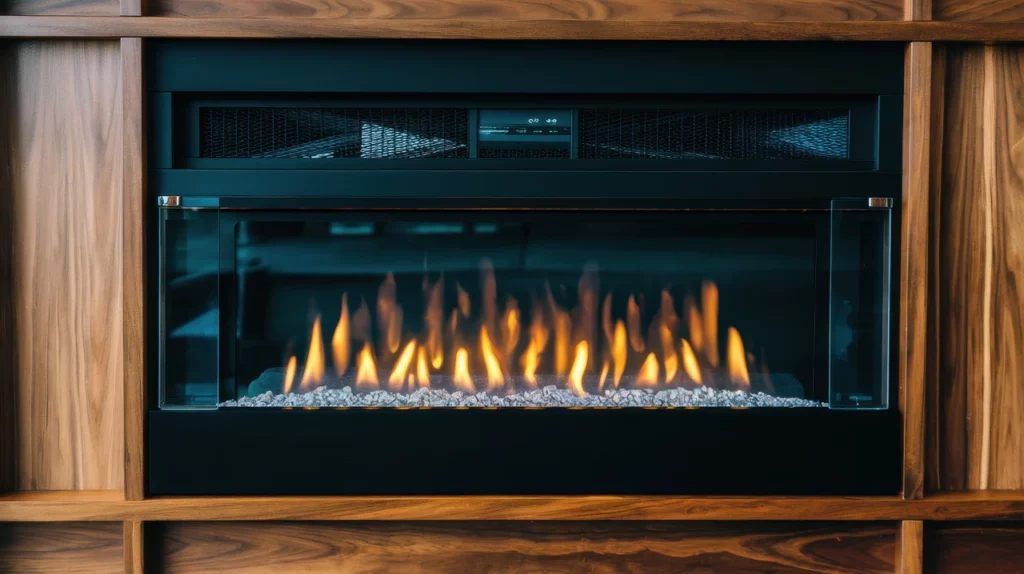
Before diving into troubleshooting, it’s essential to understand the basic components of an electric fireplace:
- Flame effect generator
- Heater
- Control panel or remote control
- LED lights
- Blower fan
- Power supply
Each of these components plays a crucial role in creating the realistic flame effect and providing heat. When one or more of these parts malfunction, it can lead to issues with your fireplace’s performance.
Common Issues and Their Solutions
1. No Flame Effect
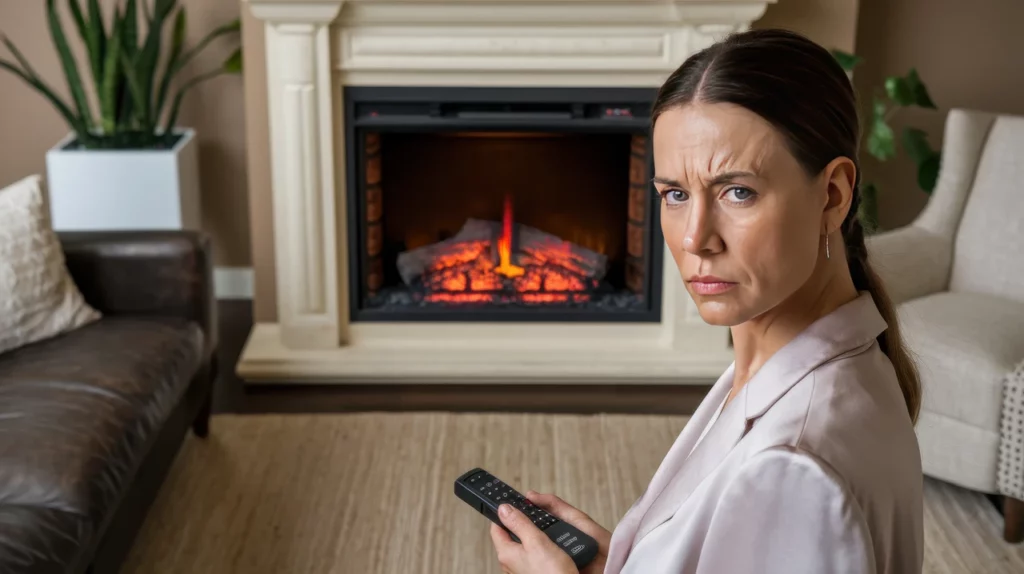
If your electric fireplace isn’t producing any flame effect, try the following steps:
- Check the power source
- Inspect the power cord for damage
- Verify that the flame effect is turned on
- Clean the flame effect generator
- Replace burnt-out LED bulbs
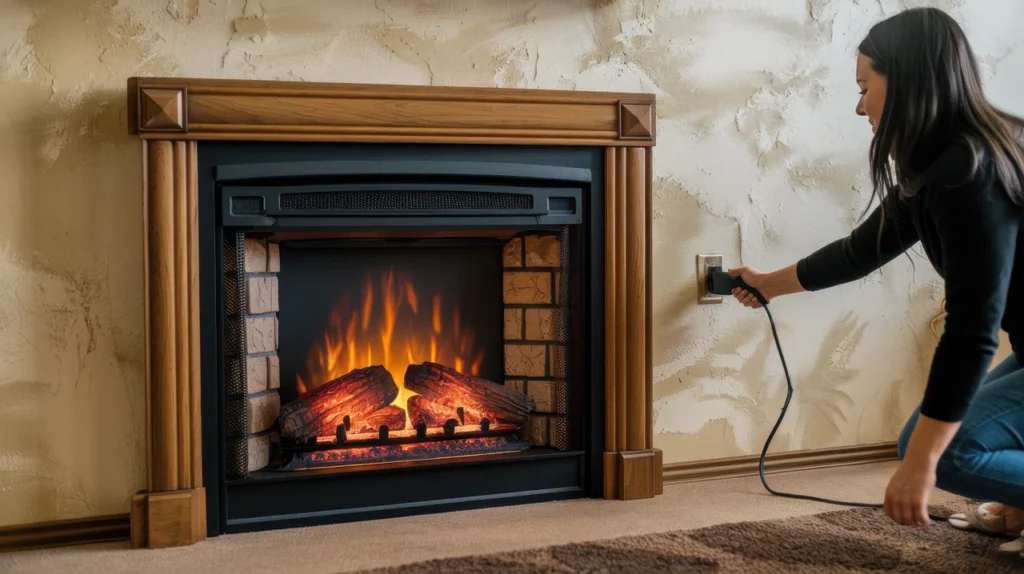
Start by ensuring your fireplace is properly plugged in and the outlet is functioning. If the power source isn’t the issue, examine the cord for any visible damage. Next, double-check that the flame effect setting is actually turned on – it’s a common oversight! If these basic checks don’t solve the problem, you may need to clean the flame effect generator. Dust and debris can accumulate over time, obstructing the mechanism. Finally, if individual LED bulbs have burnt out, replacing them can restore the full flame effect.
2. Dim or Weak Flame Effect
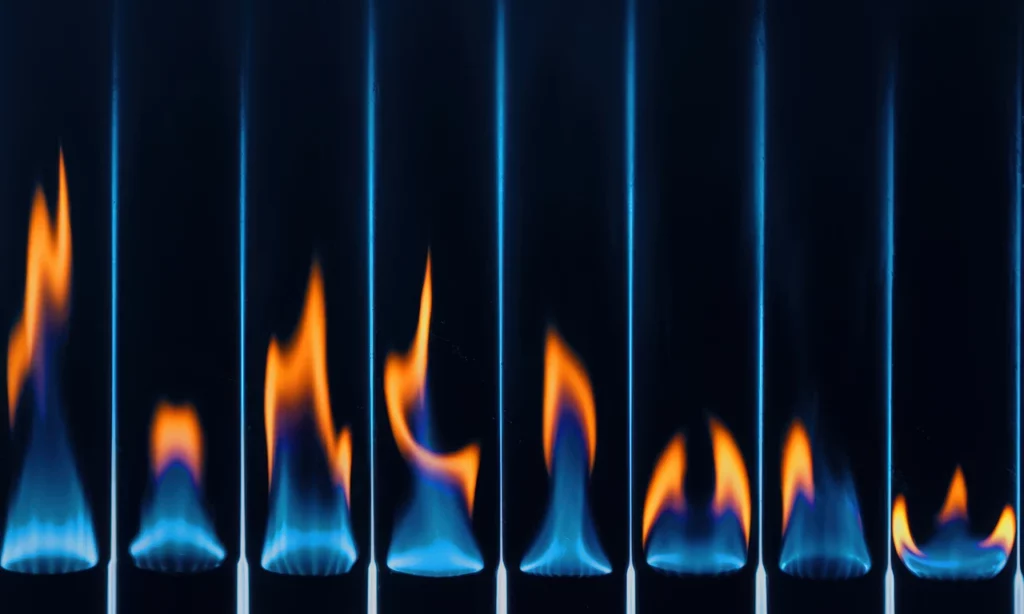
A dim or weak flame effect can be frustrating. Here’s how to address this issue:
- Adjust the flame brightness settings
- Clean the reflector and flame effect screen
- Replace old or dim LED bulbs
- Check for loose connections in the flame effect generator
- Ensure the rotating flame cylinder is functioning properly
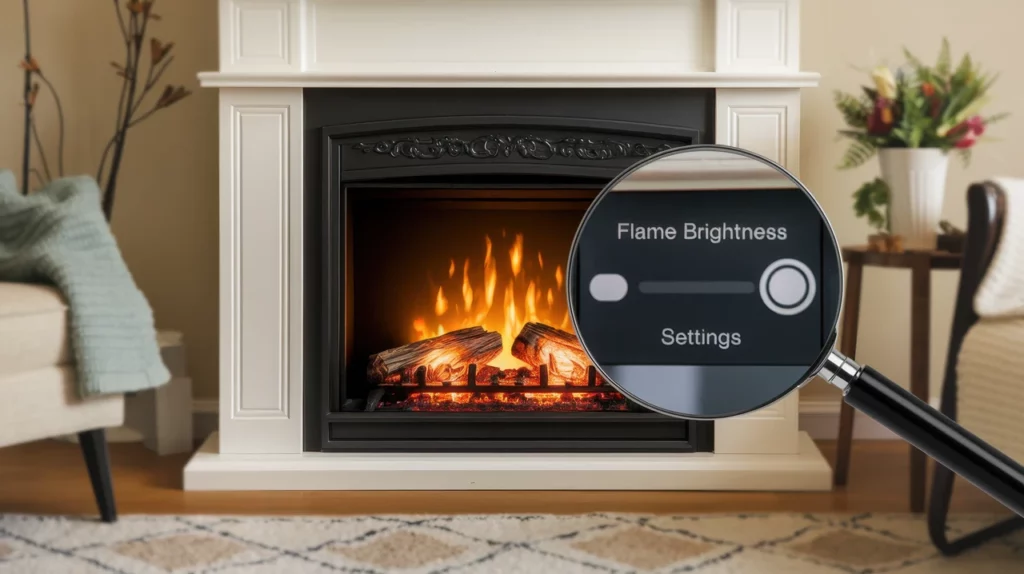
Many electric fireplaces have adjustable flame brightness settings. Make sure yours isn’t simply set to a low level. If adjusting the settings doesn’t help, cleaning the reflector and flame effect screen can make a significant difference. These components can become dirty over time, reducing the flame’s vibrancy. Replacing old LED bulbs can also brighten up the flame effect. Don’t forget to check for any loose connections in the flame effect generator, as these can cause intermittent or weak flames. Lastly, if your fireplace uses a rotating flame cylinder, ensure it’s moving freely and isn’t obstructed.
3. No Heat Output
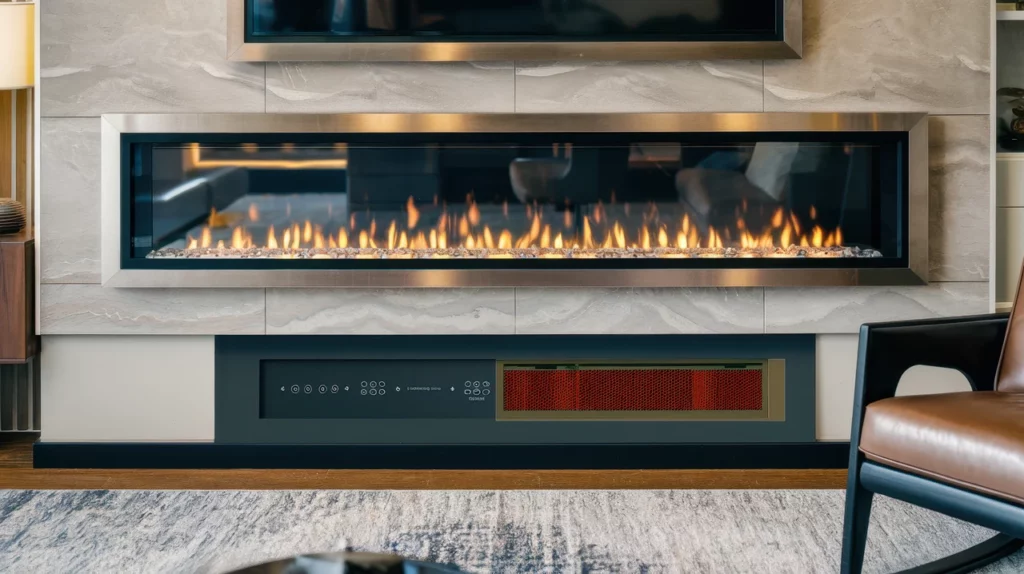
If your electric fireplace isn’t producing heat, consider these solutions:
- Verify that the heater is turned on
- Check the thermostat settings
- Inspect the heating element for damage
- Test the blower fan for proper operation
First, make sure the heater function is actually turned on – some models allow for flame effects without heat. Check your thermostat settings to ensure they’re set correctly. If these steps don’t work, you may need to inspect the heating element for damage. This might require removing the fireplace’s cover, so consult your user manual first. Finally, test the blower fan to make sure it’s working properly, as it’s responsible for distributing the heat.
4. Strange Noises

Unusual sounds coming from your electric fireplace can be concerning. Here’s how to address them:
- Tighten any loose screws or components
- Clean the blower fan blades
- Lubricate moving parts if necessary
- Check for obstructions in the air intake or exhaust
- Inspect the flame effect generator for worn parts
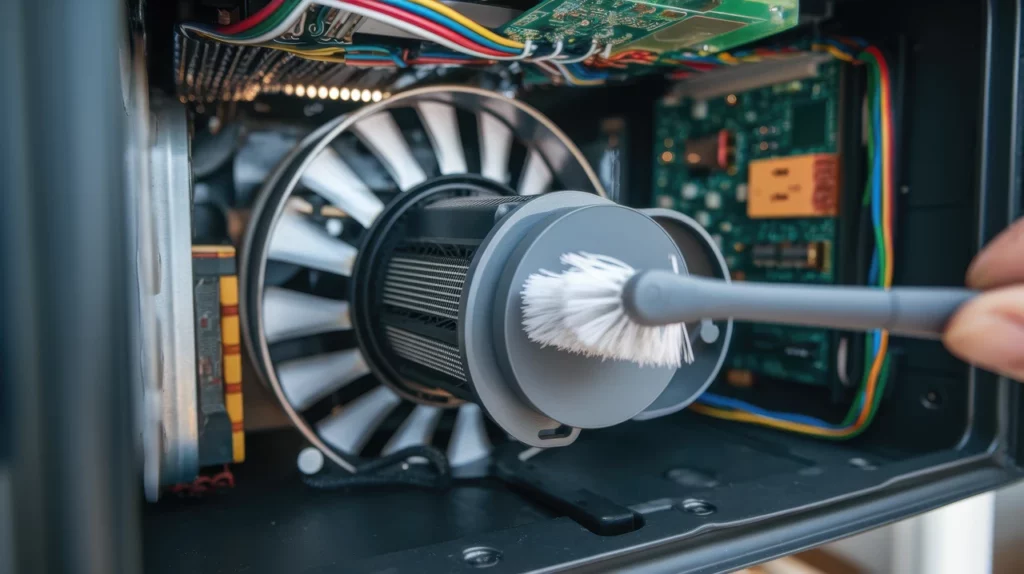
Start by tightening any loose screws or components you can access. Rattling or buzzing noises are often caused by loose parts vibrating. Clean the blower fan blades, as accumulated dust can cause imbalance and noise. If your fireplace has moving parts that require lubrication, apply a small amount of appropriate lubricant. Check for any obstructions in the air intake or exhaust that might be causing whistling or whining noises. Lastly, inspect the flame effect generator for worn parts that might be causing grinding or scraping sounds.
5. Remote Control Not Working

A malfunctioning remote control can be frustrating. Try these steps to resolve the issue:
- Replace the batteries
- Clean the remote’s sensor and the fireplace’s receiver
- Check for obstructions between the remote and the fireplace
- Reprogram the remote if necessary
- Consider replacing the remote if all else fails
The most common cause of remote control issues is dead batteries, so start by replacing them. If that doesn’t work, clean both the remote’s sensor and the fireplace’s receiver – dust and grime can interfere with the signal. Ensure there are no objects blocking the path between the remote and the fireplace. Some models require reprogramming the remote after battery replacement, so consult your user manual for instructions. If none of these solutions work, you may need to replace the remote entirely.
Maintenance Tips to Prevent Future Issues
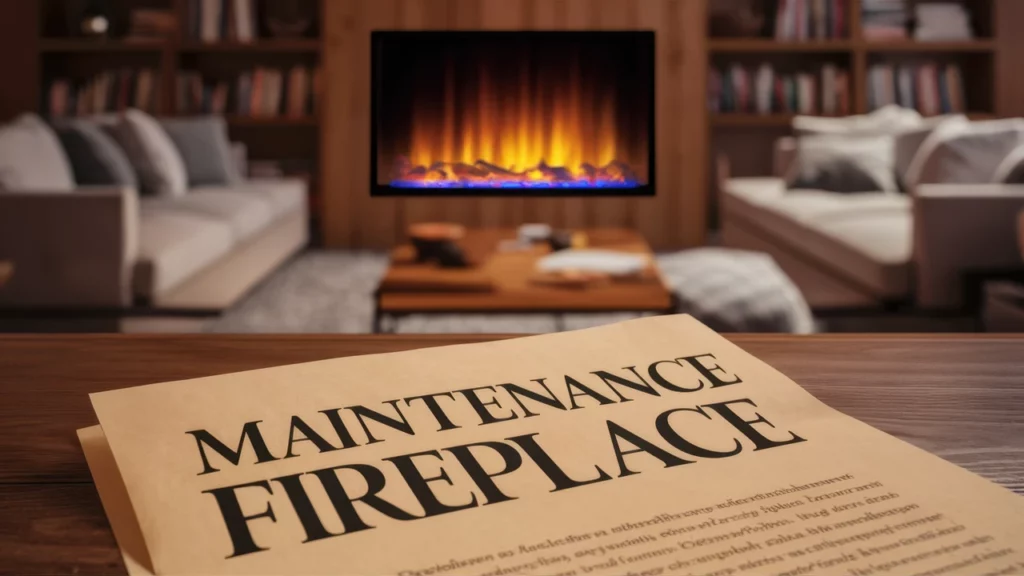
Regular maintenance can help prevent many common electric fireplace problems. Here’s a simple maintenance schedule to follow:
| Frequency | Task |
| Weekly | Dust the exterior and clean the glass |
| Monthly | Clean the air filter and flame effect screen |
| Quarterly | Inspect and clean the blower fan |
| Annually | Deep clean all components and check for wear |
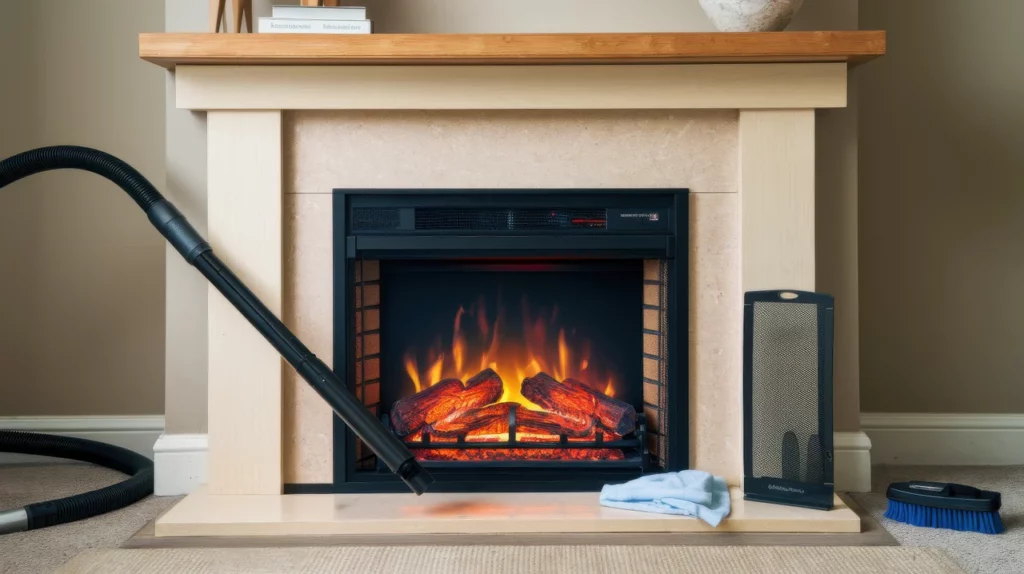
Adhering to this maintenance schedule can significantly extend the life of your electric fireplace and prevent many common issues. Regular cleaning not only keeps your fireplace looking its best but also ensures optimal performance. Pay special attention to the air filter and flame effect screen, as these components can greatly impact both the visual effect and heating efficiency when dirty.
Electric Fireplace Troubleshooting: When to Call a Professional

While many electric fireplace issues can be resolved with DIY solutions, some problems require professional attention. Consider calling an expert if:
- You encounter electrical issues beyond your expertise
- The heating element is damaged or malfunctioning
- You notice burning smells or smoke
- The fireplace continues to malfunction after trying multiple solutions
- Your warranty is still valid, and repairs are covered
It’s important to know your limits when it comes to DIY repairs, especially with electrical appliances. If you’re unsure about any aspect of the troubleshooting process, it’s always better to err on the side of caution and consult a professional. This is particularly true if you notice any signs of electrical problems, such as burning smells or smoke, which could indicate a serious safety hazard.
Upgrading Your Electric Fireplace

If your electric fireplace is older or consistently experiencing issues, it might be time to consider an upgrade. Modern electric fireplaces offer several advantages:
- More realistic flame effects
- Improved energy efficiency
- Advanced control options (e.g., smartphone apps)
- Better heating capacity
- Enhanced safety features
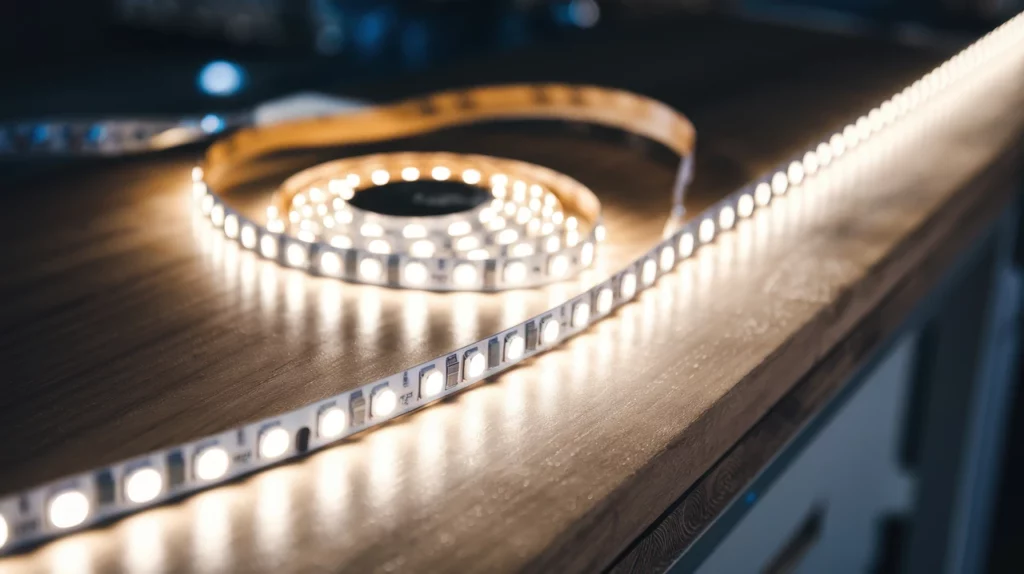
Newer models of electric fireplaces have made significant strides in flame realism, often incorporating multiple layers of LED lights and reflective materials to create a more convincing fire. Many also offer customizable flame colors and patterns, allowing you to tailor the ambiance to your mood or decor.
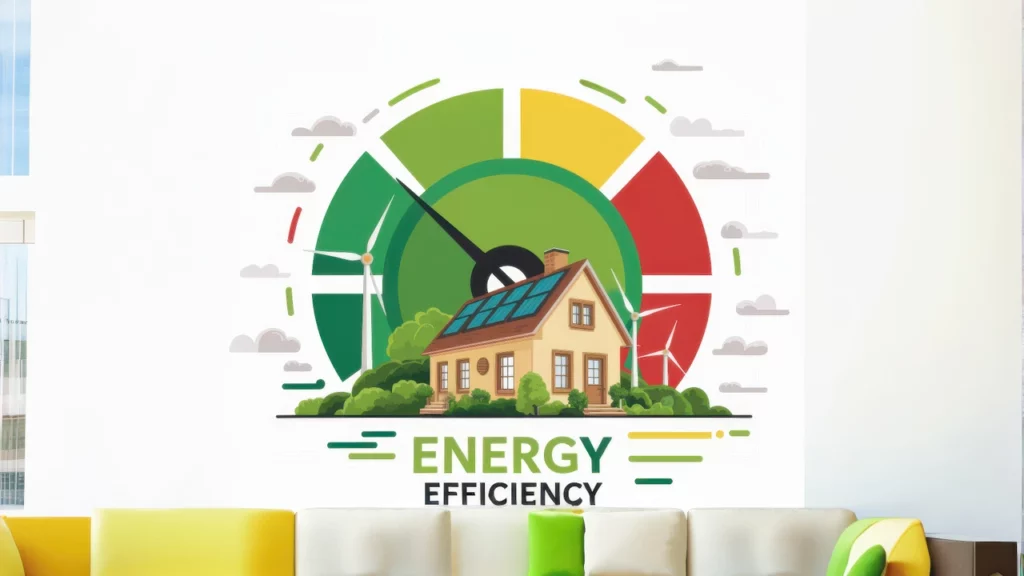
Energy efficiency has also improved in recent years, with many models now featuring adjustable thermostats, timers, and eco modes to help reduce electricity consumption. Some even use infrared heating technology, which provides more efficient and comfortable heat distribution.
Comparison of Electric Fireplace Technologies
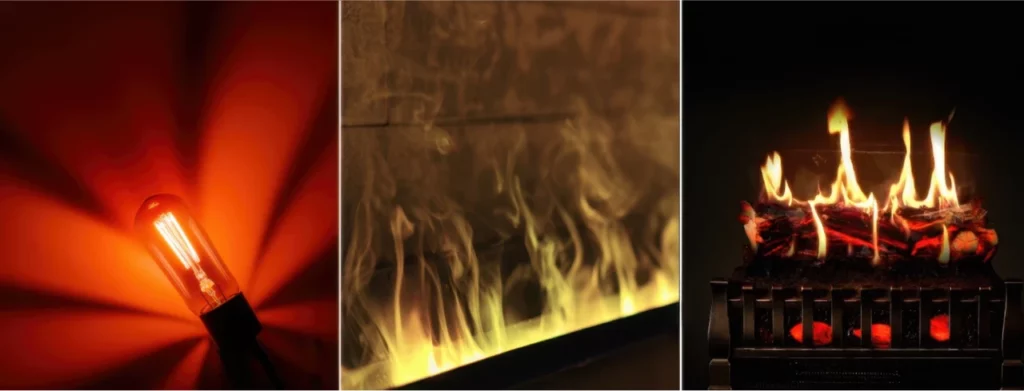
To help you understand the differences between various electric fireplace technologies, here’s a comparison chart:
| Technology | Flame Realism | Energy Efficiency | Maintenance | Cost |
| LED | Good | Excellent | Low | $ |
| LCD | Better | Very Good | Low | $$ |
| Holographic | Best | Good | Medium | $$$ |
| Water Vapor | Good | Fair | High | $$ |
Each technology has its own strengths and weaknesses. LED-based fireplaces are the most common and offer a good balance of performance and affordability. LCD technology provides more detailed and dynamic flame effects but comes at a higher cost. Holographic fireplaces, while the most expensive, offer the most realistic flame effects currently available. Water vapor fireplaces create actual wisps of “smoke” for added realism but require more maintenance and are less energy-efficient.
Safety Considerations
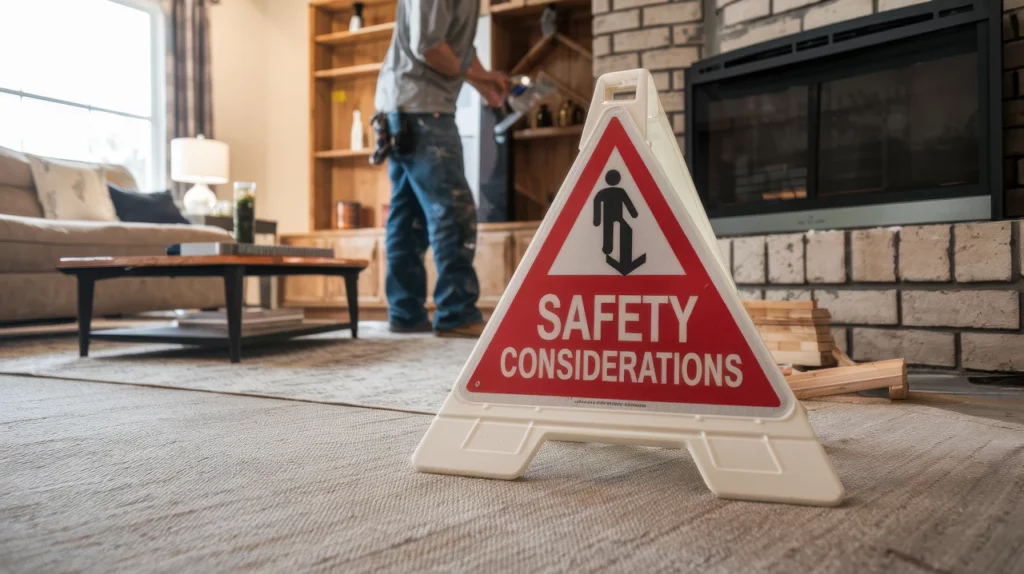
When troubleshooting or maintaining your electric fireplace, always prioritize safety:
- Unplug the fireplace before performing any maintenance
- Use caution when handling electrical components
- Keep flammable materials away from the fireplace
- Ensure proper ventilation around the unit
- Follow manufacturer guidelines for usage and maintenance
Safety should always be your top priority when working with any electrical appliance. Always unplug your electric fireplace before attempting any maintenance or repairs. If you’re unsure about any aspect of the troubleshooting process, don’t hesitate to consult a professional.
Keep in mind that while electric fireplaces don’t produce real flames, they can still generate significant heat. Ensure that there’s adequate clearance around the unit and keep flammable materials at a safe distance. Regular cleaning and maintenance not only keep your fireplace functioning optimally but also help prevent potential safety hazards.
Conclusion
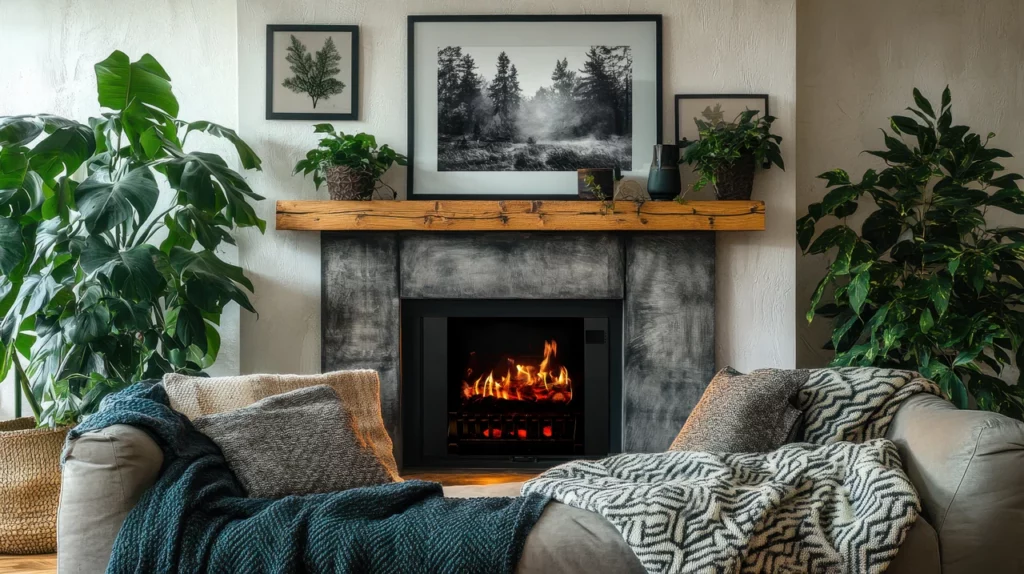
Electric fireplaces are an excellent addition to any home, providing warmth and ambiance without the hassle of traditional fireplaces. By understanding common issues and their solutions, you can keep your electric fireplace functioning optimally for years to come. Regular maintenance and prompt attention to any problems will ensure you can continue enjoying the cozy atmosphere your electric fireplace provides.
Remember, while many issues can be resolved through DIY troubleshooting, don’t hesitate to seek professional help for more complex problems. With proper care and attention, your electric fireplace will remain a cherished focal point in your home, providing comfort and style throughout the seasons.
Whether you’re dealing with a minor issue or considering an upgrade to a newer model, this guide should help you navigate the world of electric fireplaces with confidence. Keep these tips in mind, and you’ll be well-equipped to handle most common electric fireplace issues, ensuring that your home remains warm, inviting, and stylish for years to come.






























